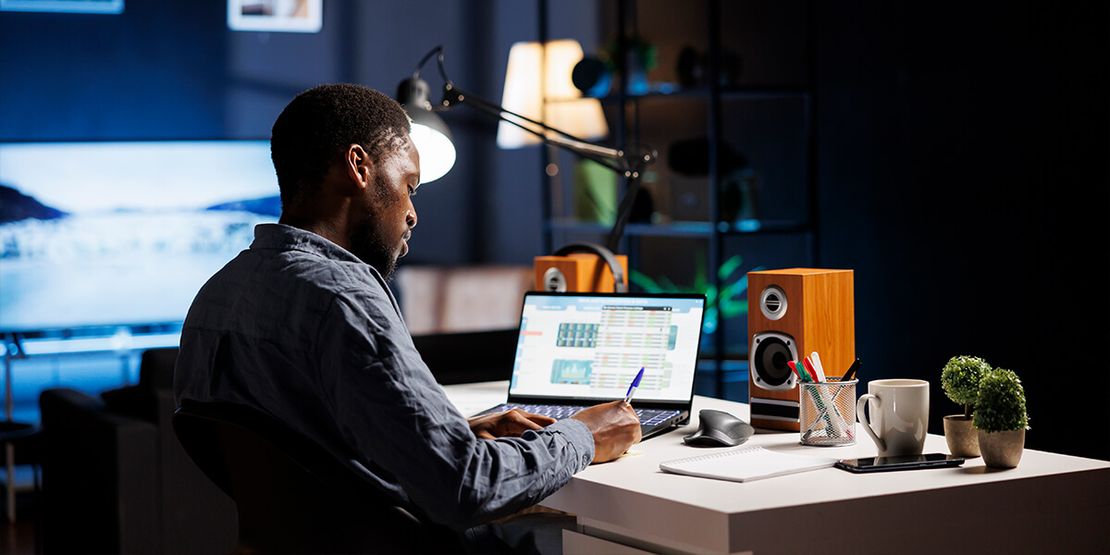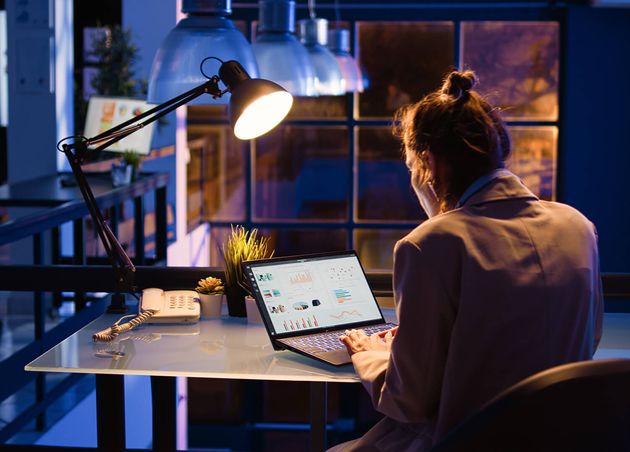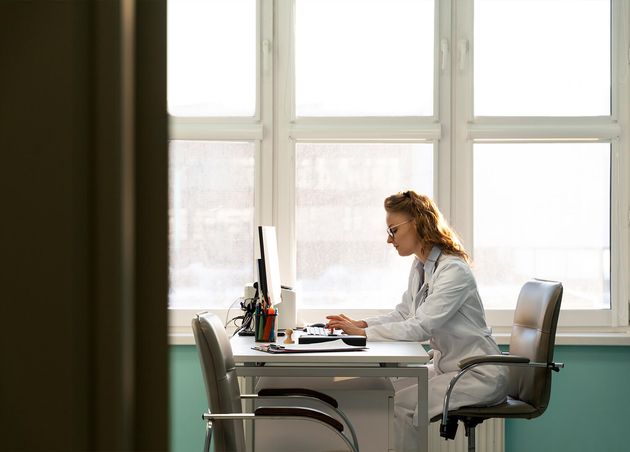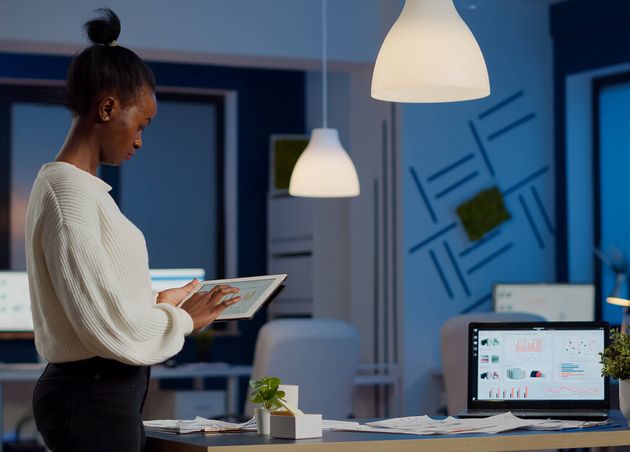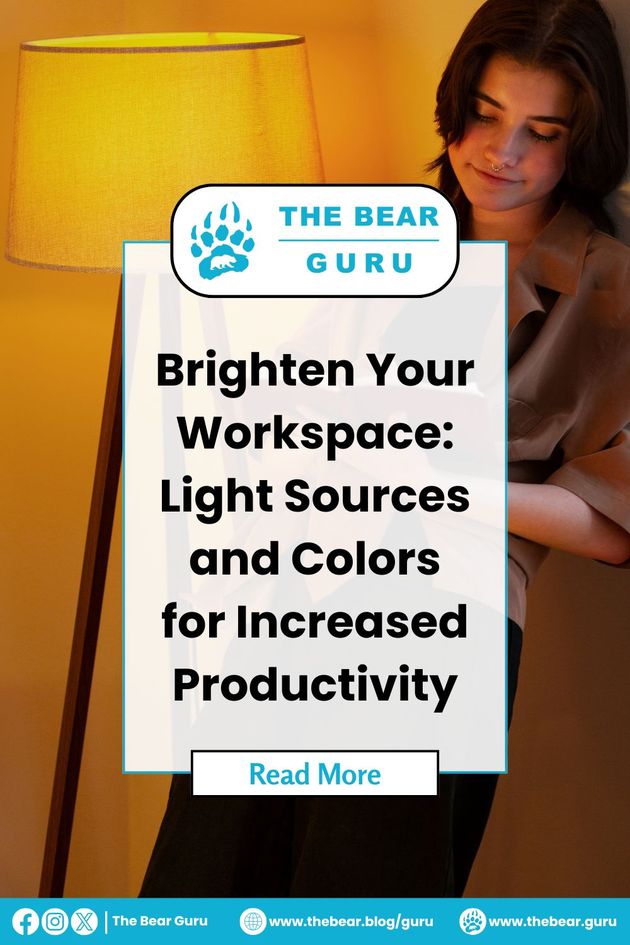Brighten Your Workspace: Light Sources and Colors for Increased Productivity
Discover how strategic use of light sources and colors can transform your workspace into a hub of productivity and focus. Dive deeper into our exploration of brightening your workspace for enhanced efficiency by continuing to read further.
🏆 Guru Trivia
There is an 84 percent reduction in headaches, eye strain, and blurred vision while working in areas with adequate natural lighting, which comes from sunlight.
Maximizing Productivity Through Strategic Color and Lighting Choices
To eliminate distractions and optimize productivity in the workplace, your selection of colors and lighting is paramount. While experimenting with different lighting setups and color schemes isn't a novel concept, recent research has provided deeper insights into principles relevant to modern businesses.
Beyond merely shaping the ambiance, both lighting and color have been shown to significantly enhance productivity, fostering more conducive work environments. For instance, ensuring ample natural light by keeping windows and skylights unobstructed is crucial, alongside employing appropriate shading techniques to regulate temperature without sacrificing illumination.
Moreover, attention to detail matters—maintaining clean, well-positioned openings for natural light and avoiding inefficient lighting fixtures are key considerations. Choosing light, pastel, and matte colors for walls and ceilings can elevate illumination levels while minimizing glare issues.
Matching equipment colors to the surroundings, such as sewing machines and workbenches, aids in maintaining visual harmony. Additionally, incorporating color into the workspace can contribute to a more pleasant atmosphere, potentially enhancing employee satisfaction and overall output.
Tailoring Office Lighting for Enhanced Performance
Strategically Positioning Light Sources for Optimal Comfort
Selecting the ideal location for your light source is paramount, particularly for prolonged computer usage. Placing a light directly in front of you can cause discomfort and glare; instead, opt for positioning it behind you, either overhead or to the side.
Consider your dominant hand—whether you're right- or left-handed—when arranging your lamp in your home office. This seemingly minor detail significantly impacts the distribution of light. For right-handed individuals, placing the lamp on the left minimizes shadows while writing and vice versa for left-handed individuals. Ensure the light is directed toward the center of your workspace to prevent it from entering your line of sight.
To alleviate eye strain while working on a computer, position a low-power bulb adjacent to the side or rear of the device. Additionally, ensure that light from ceiling fixtures is evenly dispersed throughout the room. Maintain the computer screen perpendicular to the light source, adjusting its orientation as natural light changes. Avoid exposing the computer to direct sunlight to minimize glare and discomfort whenever possible.
Establishing Favorable Distance from the Light Source
Maintaining an appropriate distance from the light source is crucial for visual comfort and focus. As the distance from the light source increases, brightness diminishes. To ensure optimal visual conditions, it's advisable to avoid mixing dimly lit and brightly illuminated areas within the same room. When positioning a light source from the side, aim for a distance of 10 to 20 feet from your workspace. For overhead lighting, the ideal distance ranges from 20 to 50 feet.
For example, if you notice the reflection of neon lights from a particular light source when it's off, anticipate it causing discomfort when your computer screen is on. In such cases, consider either relocating your desk or blocking the offending light source to minimize distractions and enhance focus.
Use of Natural Light
When optimizing your workspace, consider the interplay of various light sources, including room lighting and natural light from windows or skylights. While natural light is an ideal source, its reliability may fluctuate, especially in regions with varying seasonal luminance like ours.
Supplement with additional light sources to mitigate fluctuations in natural light and ensure consistent illumination conducive to productivity. Flexibility is key, as lighting needs can change throughout the day. Prioritize maintaining optimal working conditions by adjusting light sources according to the time of day and specific tasks.
Your visual comfort is paramount. Opt for higher brightness levels to stay alert and focused. Conversely, gentle and muted lighting fosters an environment conducive to quiet contemplation, enhancing a sense of calm and concentration. Strike a balance between brightness and subtlety to create an atmosphere that supports your productivity and well-being.
Determining the Right Number of Light Sources
In your home office setup, prioritize functionality over ornamental items by strategically placing at least two desk lamps. This arrangement helps to balance the natural light and provides consistent illumination for your workspace. Additionally, consider installing a ceiling fixture that disperses light evenly throughout the room, further enhancing the overall brightness and functionality of your workspace.
By incorporating multiple light sources, you can create an environment that promotes productivity and minimizes eye strain, ensuring a comfortable and well-lit workspace conducive to focused work.
Understanding Lighting Temperatures and Colors
Understanding lighting temperatures and colors can be illuminating for those unfamiliar with lighting terminology. The temperature of light, which is measured in Kelvin (K), indicates the color emitted when an object is heated to a certain degree. As the temperature rises, the emitted colors change, providing different hues.
To illustrate, consider a blacksmith heating an iron horseshoe. Initially, the horseshoe emits a red glow, progressing through orange, yellow, white, and finally a bluish-white color as the temperature increases. Light sources with higher color temperatures are often termed "cool," emitting hues towards the violet and blue end of the spectrum. Conversely, lower color temperature light sources are referred to as "warm," emitting tones ranging from red to yellow.
Here's a breakdown of common color temperatures:
- Higher Color Temperatures (Cool or Daylight Hues)
- These emit a blue-white appearance.
- These emit a blue-white appearance.
- Lower Color Temperatures (Warm Colors)
- Ranging up to 3,000K, these emit tones from red to yellowish-white.
- Ranging up to 3,000K, these emit tones from red to yellowish-white.
- Mid-Range Color Temperatures (3,100K–4,600K)
- Resemble cool white lighting.
To provide practical context, consider these examples:
- Firelighting
- Approximately 2,000K, emitting a warm glow.
- Approximately 2,000K, emitting a warm glow.
- Sunset
- Around 4,000K, characterized by a cooler white hue.
- Around 4,000K, characterized by a cooler white hue.
- Sunny Daylight
- Typically 5,000K–5,500K, presenting a cool color temperature.
- Typically 5,000K–5,500K, presenting a cool color temperature.
- Cloudy Winter Day
- Approximately 7,000K, producing a chilly color.
Understanding these temperature variations can help in selecting lighting that suits a space's desired ambiance and functional requirements, ensuring optimal comfort and visual appeal.
FAQs About Workspace Lighting
- Question: Which kind of light works best for humans?
- Answer: Natural illumination! If that's not feasible, opt for lighting solutions that mimic natural light cycles. This helps regulate our internal body clock or circadian rhythm.
- Answer: Natural illumination! If that's not feasible, opt for lighting solutions that mimic natural light cycles. This helps regulate our internal body clock or circadian rhythm.
- Question: What distinguishes cool light from warm light?
- Answer: Warm light, typical of evenings, has a temperature of around 3,000 Kelvin and emits tones ranging from red to yellow/white. Cool light, on the other hand, exhibits blue-white hues with temperatures between 4,600K and higher, resembling daylight.
- Answer: Warm light, typical of evenings, has a temperature of around 3,000 Kelvin and emits tones ranging from red to yellow/white. Cool light, on the other hand, exhibits blue-white hues with temperatures between 4,600K and higher, resembling daylight.
- Question: Where should I place my desk at work?
- Answer: Whenever possible, position your desk to benefit from natural sunlight. If not, consider lighting options that replicate daylight, such as table lamps or bulbs emitting cool, blue light.
- Answer: Whenever possible, position your desk to benefit from natural sunlight. If not, consider lighting options that replicate daylight, such as table lamps or bulbs emitting cool, blue light.
- Question: How should my home office be lit?
- Answer: Opt for cool, daylight-like lighting with a blue spectrum. This not only enhances productivity but also suppresses the production of melatonin, which can induce sleepiness.
🏆 Guru Fact!
Light has a significant impact on our physical and mental health. Light exposure affects our sleep patterns, mood, and overall well-being.
Effective Workspace Lighting for Increased Productivity
D (Big Bear)
A software developer by trade, CTO by profession, motorcyclist and touring enthusiast, family man, tech lover, minimalist, tech leader, expat/immigrant, and above all, a free spirit.
More From The Bear Guru
Wise: What is it and How Does it Work?
Guru Bear
Freelance Essentials: Creating Your Own Website
Faheem Hussain (Nomad Bear)


